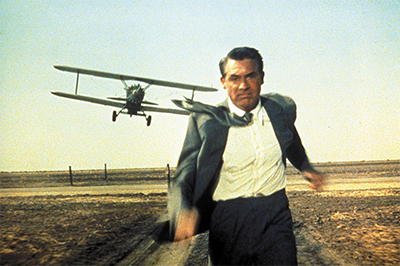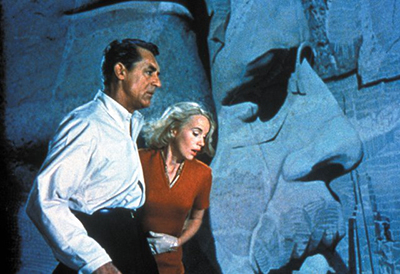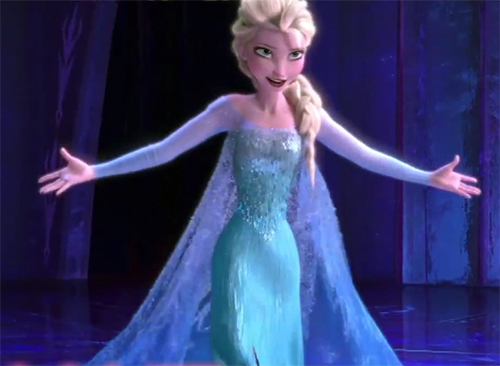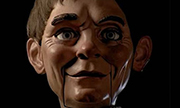
What's your favorite film? Is there a movie that changed your life? Send us an essay of 500 words, give or take, about that film you can't forget – classic or contemporary – and we'll consider it for publication in these pages. In addition to your short essay, send your name, occupation, hometown, phone number, jpeg headshot and e-mail address to Editor@AFI.com. We reserve the right to edit for length and clarity.
READER REVIEW: NORTH BY NORTHWEST
By Steve Pepdjonovic

Steve Pepdjonovic is a freelance writer and veteran traveler who hails from Boston and now resides in Los Angeles.
 I love road trips. I'm also a big fan of adventure (who isn't?). But more than anything, I'm a sucker for Alfred Hitchcock films. So it should not be a surprise that, out of all of the films from "the master of suspense," NORTH BY NORTHWEST is my all-time favorite.
I love road trips. I'm also a big fan of adventure (who isn't?). But more than anything, I'm a sucker for Alfred Hitchcock films. So it should not be a surprise that, out of all of the films from "the master of suspense," NORTH BY NORTHWEST is my all-time favorite.
In the movie, Cary Grant is both sharp-witted and likable as Roger Thornill, the man wrongly fingered by spies bent on killing him. Eva Marie-Saint is perfectly enigmatic, elegant and clever as Eve Kendall. The two trek from the East Coast to the Midwestern United States with several henchmen in close pursuit. NORTH BY NORTHWEST is the perfect blend of what epitomizes a Hitchcock film: mistaken identity, a MacGuffin plot device, a mysterious blonde.
But there's one other characteristic that makes this a landmark motion picture: the use of famous landmarks. In the film's original trailer, the director, speaking directly to the camera, portrays a travel agent. "I promise you nothing but entertainment," he assures the audience in his trademark British accent. In the movie, which he describes as a "quiet little tour of, say, 2000 miles," Hitchcock successfully weaves several notable locations into the film, which include the United Nations (UN) headquarters, Grand Central Station and, unforgettably, Mount Rushmore.
 Hitchcock had used iconic locations in previous films – the Golden Gate Bridge in VERTIGO, Royal Albert Hall in THE MAN WHO KNEW TOO MUCH and the Statue of Liberty in SABOTEUR. But, in NORTH BY NORTHWEST, he compresses several highly recognizable locations into one film and uses them to their full potential. These places aren't mere set pieces, but instead locales where pivotal scenes in the story take place. They are almost like silent, yet grand characters themselves.
Hitchcock had used iconic locations in previous films – the Golden Gate Bridge in VERTIGO, Royal Albert Hall in THE MAN WHO KNEW TOO MUCH and the Statue of Liberty in SABOTEUR. But, in NORTH BY NORTHWEST, he compresses several highly recognizable locations into one film and uses them to their full potential. These places aren't mere set pieces, but instead locales where pivotal scenes in the story take place. They are almost like silent, yet grand characters themselves.
The murder for which Thornhill's character is wanted (but didn't commit) happens in the lobby of the UN headquarters in New York City. A beautiful distant matte shot from the top of the building shows Thornhill entering a taxi and the overhead acrophobic view is nothing short of breathtaking. Before we leave New York City, another critical moment occurs: our hero and Kendall first meet at Manhattan's renowned architectural transportation gem, Grand Central.
The film then shifts to Chicago and eventually to the neighboring iconic landscape of the plains of central North America. The latter involves the most well-known and tension-filled scene in NORTH BY NORTHWEST: that of Thornhill, stranded on a flat, open and deserted road, trying to outrun a killer crop duster.
Since this film is in many ways a road movie which showcases several parts of the United States, what better place to shoot the film's climax than South Dakota's Mount Rushmore? And while at it, why not include a suspenseful chase scene along the carved granite faces of the presidents? The monument isn't just a set, but yet another obstacle Thornhill, Kendall and the pursuing evil henchmen must overcome. The characters climb up and down the precarious faces, which seemingly watch the scenario unfold the same time we do as the audience.
Regardless of where these shots were actually shot (the United States government didn't allow Grant and Saint to cling perilously from Mount Rushmore; it was shot on a studio soundstage), NORTH BY NORTHWEST was British-born Hitchcock's postcard to the country he eventually adopted and loved. In the aforementioned trailer, he claims he made the film "to show you some of these delights."
Anytime I feel like taking a road trip through America from the comfort of my own home, I pop in NORTH BY NORTHWEST. The movie still inspires me to get in my car in search of adventure – preferably one that doesn't involve being pursued by an evil spy and his henchmen.
READER REVIEW: FROZEN
By Sarah Ledesma

Sarah Ledesma lives in North Hollywood and produces the web series PROJECT VINCIBLE.
 I came of age in the era of the Disney Princess Renaissance. I cut my teeth on THE LITTLE MERMAID (1989), BEAUTY AND THE BEAST (1991) and ALADDIN (1992). Disney princess films were a finishing school for my budding imagination. I lost myself within their lush scores and the promise of "happily ever after."
I came of age in the era of the Disney Princess Renaissance. I cut my teeth on THE LITTLE MERMAID (1989), BEAUTY AND THE BEAST (1991) and ALADDIN (1992). Disney princess films were a finishing school for my budding imagination. I lost myself within their lush scores and the promise of "happily ever after."
Since then, I've been on a quest to re-capture their magic. Enter FROZEN, Disney's 53rd animated feature, loosely based on Hans Christian Andersen's 1845 short story, "The Snow Queen." Without a doubt, it delivers on all the classic components of Disney animated fairytales with soaring music, comic sidekicks and a love that stands the test of time, albeit with a slight twist.
Disney re-invents its tradition of classic fairytale princess movies with the release of FROZEN where we meet two sisters as heroines, Elsa and Anna. Refreshingly, love in FROZEN comes in the form of a sacrifice for the family, and not in the form of romantic love.
Like most young persons coming of age, Princesses Elsa and Anna find themselves at a crossroads of sorts when it is time to open the gates of their slumbering kingdom and welcome the outside world for the coronation of Queen Elsa.
 FROZEN does not rely on traditional plot pivot points of the heroine in distress but rather empowers each of the princesses to find their own path. Elsa does not need saving, only the time to realize her true potential. And Anna's strength, while not magical like her sister's, lies in her resiliency.
FROZEN does not rely on traditional plot pivot points of the heroine in distress but rather empowers each of the princesses to find their own path. Elsa does not need saving, only the time to realize her true potential. And Anna's strength, while not magical like her sister's, lies in her resiliency.
Unbeknownst to Elsa, as the kingdom lies in peril, it is up to Anna to track her down and re-connect their sisterly bond. While Elsa wanders to the outskirts of her magical frozen kingdom trying to find her strength in identity, it is here – perfectly timed, I might add – where Disney rediscovers its classic musical magic with the number, "Let it Go." Belted out by Idina Menzel ("Wicked"), the song moved me with its mantra to let youthful inhibitions go and find the strength within yourself.
Along the perilous journey through Elsa's enchanted winter kingdom, Anna finds relief in the classic comic sidekick, Olaf the Snowman. After all, who is Ariel without Sebastian, Belle without Lumière, and Aladdin without Abu? Olaf, the happy-go-lucky snowman, loves warm hugs and summer. Yes, you read that right – he's a snowman who loves the idea of summer, which provides the perfect comic relief throughout the journey.
 Slap-happy snowmen aside, what is most up-to-date about the film is that the act of love that releases the enchanted kingdom from the curse of Elsa's power is altruistic, not romantic. It is an act of courage and self-sacrifice that sets the sisters free and allows the kingdom to flourish ever after, not the kiss of a handsome prince.
Slap-happy snowmen aside, what is most up-to-date about the film is that the act of love that releases the enchanted kingdom from the curse of Elsa's power is altruistic, not romantic. It is an act of courage and self-sacrifice that sets the sisters free and allows the kingdom to flourish ever after, not the kiss of a handsome prince.
Without a doubt, Disney animation films can shape a young person's expectations of the world, be they good or bad. That was my experience, and that is why I was so pleasantly surprised by this modern-day adaptation's ability to portray the fairytale world as a classic allegory, portraying the struggles of growing up. In FROZEN, family bonding trumps Prince Charming.
Edit Here




